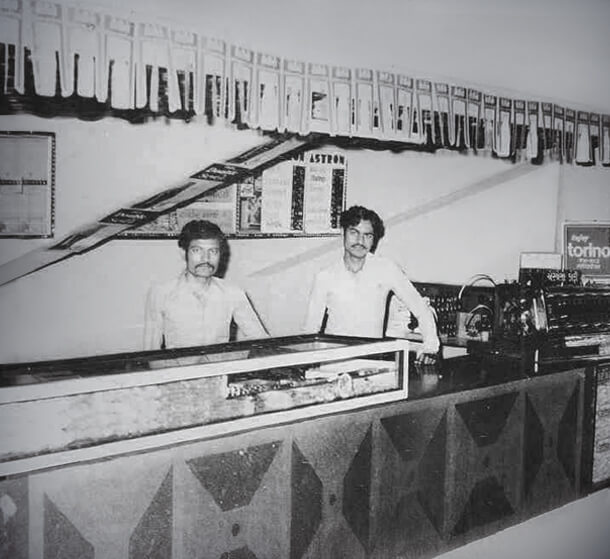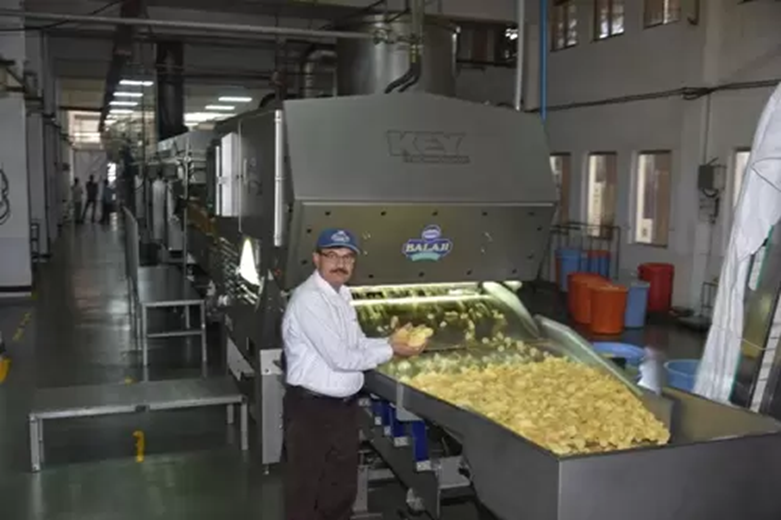Let's explore the fascinating tale of Balaji Wafers, which stands as India's second-largest chips maker, trailing only behind Lays! At the age of 15, Chandubhai Virani and his family relocated to Dhundoraji (Jamnagar), situated 79 km away from Rajkot. In 1972, Chandubhai's late father, Popat Virani, sold some barren land and handed Rs 20,000 to his sons, Meghjibhai, Bhikhubhai, and Chandubhai, as a means to start a new life outside the village.
The three brothers initiated a small venture focused on agricultural products and farming equipment in Rajkot. Unfortunately, the venture faced failure within two years. Consequently, the brothers found employment at Astron Cinema's canteen. Despite having only a 10th-grade education, Chandubhai secured a job at Astron Cinema. His primary responsibilities involved serving at the canteen, but he also took on miscellaneous tasks such as putting up posters, acting as a doorman, and guiding patrons, all for a monthly salary of Rs 90! Chandubhai recalls, "After the shows ended, I would repair damaged seats and, in return, receive a plate of chorafari (a Gujarati snack) at night."
Due to our lack of funds, we were forced to flee our rented dwelling one night since we couldn't even afford Rs 50 for rent. (Later, we repaid the landlord.) Chandubhai willingly took on tasks of all sizes. After a year, the owner of the movie canteen was incredibly impressed and offered him and his siblings a contract worth Rs 1,000 per month. By 1982, the entire family had relocated to Rajkot, and Ramjibhai had purchased a spacious home with a large compound.
While the family's masala sandwiches were popular in the cafeteria, they had a short shelf life. Recognizing the immense demand for wafers at the theater, with demand consistently surpassing supply, Chandubhai envisioned wafers as a potential product. Following his work at the canteen, Chandubhai established a small shed in the courtyard, costing approximately Rs 10,000, and embarked on his chips-making experiments. The Virani brothers decided to produce potato chips from their tiny, one-room residence. The Virani brand of chips found eager consumers not only within the cinema hall but also outside its premises.
Balaji Wafers today
By 2017, Balaji Wafers had achieved a revenue of Rs 2000 crore, solidifying its position as a prominent regional brand for potato wafers and snacks in India. It also became the second-largest player in the potato wafer market. As of FY21, according to Wikipedia, their revenue stands at Rs 4000 crore. Interestingly, Balaji Wafers received a buyout offer of Rs 4000 crore, which they chose to decline. Currently, Balaji operates four factories in India, collectively capable of processing 6.5 million kg of potatoes and 10 million kg of namkeen per day.
The opening of their third factory in Valsad in 2008 marked a significant milestone, as it possessed the largest potato processing capacity in Asia at the time, capable of handling 9,000 kg of potatoes per hour. In 2016, Balaji Wafers proudly unveiled a state-of-the-art, fully automated facility in Indore. Their product range consists of 13 flavors of wafers, 22 flavors of namkeens, and 15 flavors of Western snacks, comprising a diverse portfolio of over 125 SKUs. Additionally, Balaji Wafers is committed to gender diversity, with women comprising 50% of their workforce. Currently, the company employs a total of 5000 individuals.
How did they beat the MNCs?
- By providing quality products, delivery, and pricing
- Importance of tech in scaling up - In 1996 the company installed its first semi-automatic plant with a capacity of 250 kg potato chips/hour. By 1999 it was working at full capacity
- They define their business in just one word –‘Pull’
- “We just focus on quality, which is the biggest pull for consumers.”
- “Woh dimaag se kaam lete hain. Hum dil aur dimaag donon istamaal karte hain (We use both: Our heart as well as brain),” he says.
- The company has no sales or revenue targets
- Even their grammage is more when compared to other chips players!












.jpg)